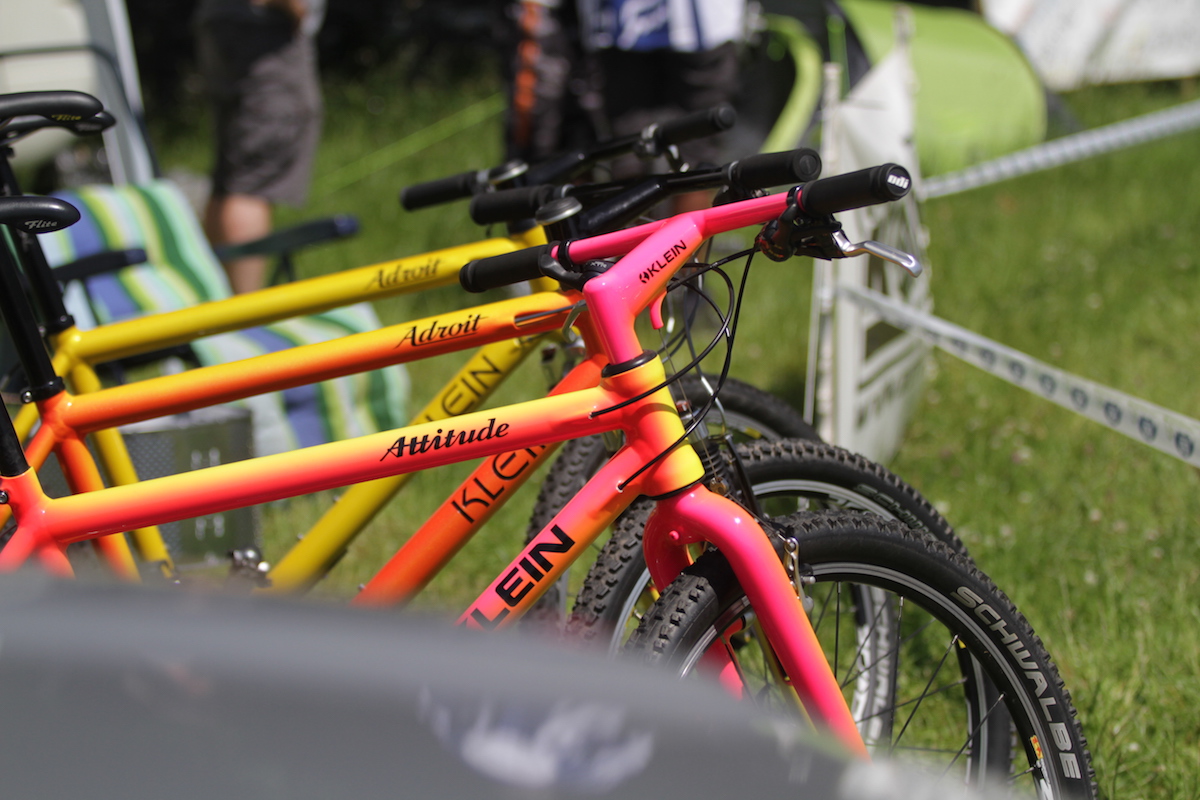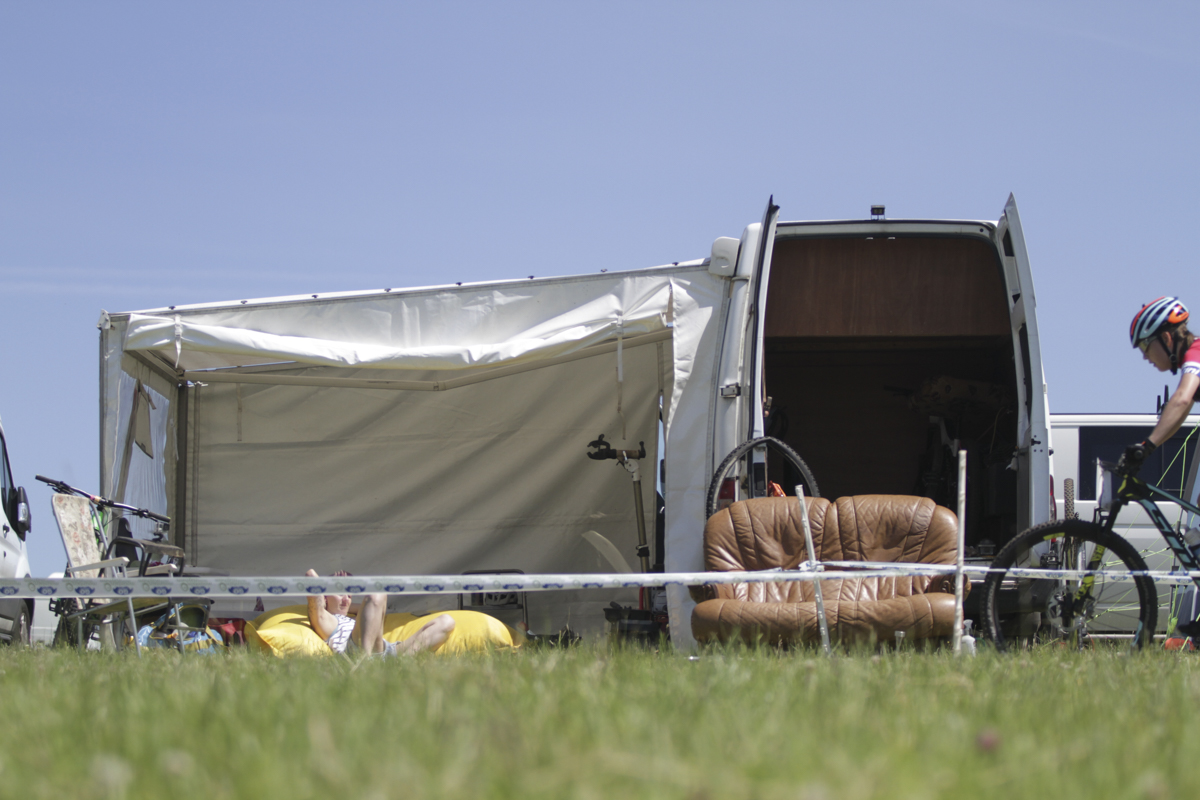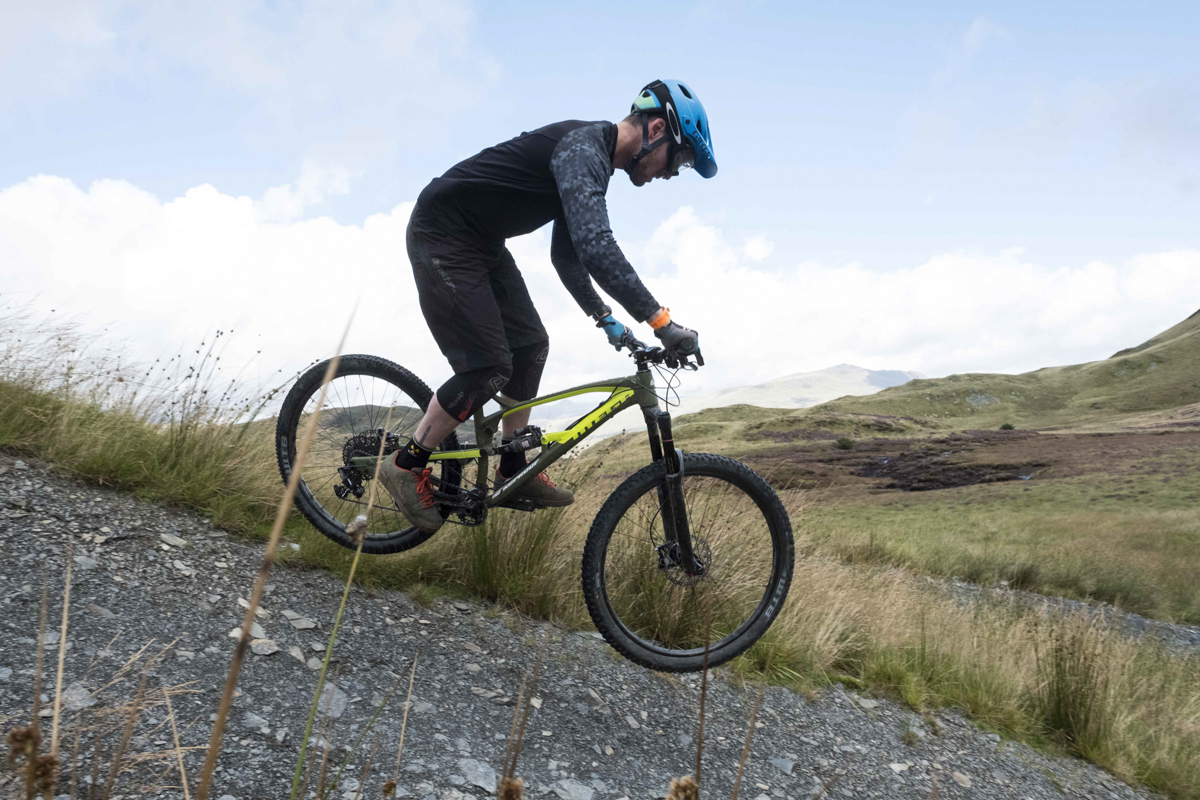‘Fashion’ is inherently cyclical; with the very survival of the industry largely dependent on that facet; totally reliant on the unquestioning acceptance of the target market, believing that value vanishes from one item, only to instantaneously be generated in another, for no reason other than being told it’s always been that way. Ranges change continually, a never-ending conveyor belt spewing from a cabal of ‘trend-setters’ and pushed into the mainstream by heavily-funded marketers selling an unattainable vision of perfect existence. It seems linear to those immersed within, but stare long enough and you’ll spot the old ideas rehashed and resurfacing as the ground-breaking concepts of the future, ready to be lapped up by a new generation, ignorant of their predecessors.

Like it or not, in many ways the mountain bike industry also operates in this manner, with genuine technological advance having inevitably slowed, necessitating the power of the ad-departments to keep the consumers consuming. Concepts are neatly packaged to convince the buying public that they fit within definable genres, to target them with products certain to improve their experiences. Over the years we’ve witnessed the peak and subsequent regression of ‘Cross Country’, ‘Downhill’, ‘Freeride’ and ‘Slopestyle’ before the most recent construct, ‘Enduro’ was born. Whilst the previous formats have never completely vanished, they become ever-more niche, shrinking to the hard-core who seek non-compromised designs that excel within single-usage specialisms but often suck at everything else, limiting their saleability. The mass-market appeal of ‘Enduro’ type bikes is more obvious, with an emphasis on all-round ability rather than specialist perfection; and yet closer examination of modern frame dimensions reveals striking similarities to the original ‘mountain bikes’, now long cast into the realms of history.

Encapsulating how ‘everybody’ rides into a marketable concept is an undeniable master stroke, pushing this Enduro concept despite alternate morphologies meaning that we’re not all blessed with Alpine length descents to play on. It’s been impossible not to notice the growing prevalence of a certain type of bike on the trails of Northern Ireland, and I’d hazard elsewhere too. Slacked-out, stretched-out long-travel machines with stunted stems and gateway-worryingly wide bars, designed to flatten the tech, sail the gaps and help the rider out descend their mates, because, well, that’s what we all aspire to, isn’t it? A swift Google search of the word ‘Klunker’ reveals that these motivations are nothing new, and yet there’s a marked difference between the way the pioneers of MTB behaved and their modern-day brethren.

Sundays in the woods are now inevitably accompanied by visions of riders spinning frantically up hills, legs comically whirling their 30:50 gear ratios to force a snail-like forward momentum; concentration simultaneously stretched to snapping by the flip-flop swinging of a front-wheel dictated by raked-out head angle. Climbs take an age at their barely-walking pace and a notable proportion of folk I see have succumbed to logic and just jumped off instead. The pioneers of off-road cycling also took this approach, not dreaming of attempting to ride to the top of the ‘Repack’ descent, but they had the awareness to realise that their bikes were grossly unsuitable for such an activity. Modern riders, however, have been cleverly convinced that their own bikes are a different breed, ideally suited to all applications.
Have they been short-changed? Is sweating and gurning at a lamentable velocity for half an hour, to enjoy a two-minute blast on a descent largely sanitised by their machinery really the essence of mountain biking pleasure? Many press-delivered bike tests have succumbed to the belief that these machines genuinely are universally capable, waxing lyrical about all-round prowess without giving any frame of reference. Have expectations really been lowered this far?

Chipps’ recent interview with Keith Bontrager, an original MTB hero and creator of some incredible frames ideally crafted to the riding we tended towards in the nineties, revealed similar reservations. He decried ‘modern geometry’ as akin to the Emperor’s new clothes, pointing out that it isn’t at all suitable for the type of riding he does. This echoed the words of another industry insider I personally interrogated recently who posed the question whether ‘ten degrees slacker is always ten degrees better?’
These experience-based opinions invite the question whether the current Enduro hype has forcibly dictated the way many of us ride, rather than reflecting it at all? Like the age-old question regarding drugs and music development, which was the cause and which the effect? Did we always spend hours ascending and minutes talking shit at the summit before donning pads, goggles and adjusting shocks just to smash back down for a handful of seconds? Bontrager knows we didn’t, harking to a time when bikes were designed as genuine all-rounders, more focused on the aspects of riding that we spent the most time doing, excelling on the ups and still very capable at carving singletrack and enjoying the downs.
…to improve your biking experience don’t upgrade your bike, upgrade your body, simply get out and get fitter
From a personal standpoint, what constitutes ‘mountain biking’ has never been entirely fixed, the ever-expanding aspirations necessitating further purchases and differing designs, always seeking that perfect all-round performer. Yet despite local trail development undoubtedly being shaped by the long-travel beasts, it’s increasingly hard to justify riding a machine that has swayed so far towards downhill performance, to the detriment of all else. After all, it’s not that long-ago that Sam Hill was winning World Cup races on an Iron Horse Sunday that was considered one of the most capable DH bikes around, despite having a 65-degree head angle that’d be thought too steep for many current ‘trail bike’ designs.
…dragging a 30lb bobbing sofa around a trail centre is no longer the definition of mountain biking nirvana
Eschewing suspension and taking the hardtail on recent mountainous XC spins has further highlighted modern trail bike shortcomings, as despite a lack of squish it has totally excelled at blasting non-stop through the local hills, serving as a reminder of a time when covering distance was the main aim, exploration and physical effort bringing tangible reward. Like Bontrager said, to improve your biking experience don’t upgrade your bike, upgrade your body, simply get out and get fitter, the rewards are exponential and not just for your riding.

The next repackaging will be extremely interesting, will there be a mass awakening as a new wave of bikers are informed by the industry that dragging a 30lb bobbing sofa around a trail centre is no longer the definition of mountain biking nirvana? How long before things come full circle once again and uphill speed gains equal footing on the drawing boards of influential designers? Travel shortening, hardtails rejuvenated, narrower tyres with an emphasis on rolling speed over outright cornering performance? The best of the recent two decades of technological ‘advance’ will stay but overly-long front centres and overly-slack head angles may well be consigned to the past. Will frame design come forward to the old school, edging back to genuine all-round performance, thirty per cent better in most applications with maybe a ten per cent detriment to outright downhill speed? Rides may again focus on enjoying the entire experience, not eternally fixated on shaving milliseconds when gravity assisted. The one thing beyond doubt is that sometime in the future, ‘mountain biking’ will be re-defined again for a new generation, I wonder which direction it’ll head?

I think a big problem is people insisting on using the term “Enduro” when really it’s just mountain biking. People are obsessed with what defines “Enduro” be that kit or bike. In reality we have been riding all rounder bikes for decades and with each passing year the industry thought up new names to sell them to us. It’s interesting that my Geometron is one of the heaviest and definitely the slackest/longest bikes I have had yet it climbs better and is is more reliable than everything I have had in recent years too. For me the very essence of mountain biking is a bike that can be used for a quick xc spin, a day in the mountains or a week of uplifted riding abroad and that pretty much describes every bike I have had since the late 90s, before the marketing term “Enduro” was invented.
The author makes a few good points. Sadly, they’re overshadowed by the massive chip on his shoulder and the enormous bias on the other.
I took the point of the article to be that people are often overbiked, which is potentially pushed by ‘fashion’, and I agree.
This is not to say it’s not the owner’s choice etc. etc., more an observation based on experience.
For instance: is the YT Capra a great bike for Swinley Forest? Arguably no. But is it a great tool for riding in Chamonix? Yes, it is. So if a Swinley-based rider can only buy one bike, is s/he better off on a 31lb incredibly capable 170mm ‘enduro’ bike – which does pedal very well for what it is and will be the tool of choice for that one week in Morzine – or a nippier 120mm bike, for the other 51 weeks of the year? For me that’s where the choice comes in.
I realise that this is one of those articles whose purpose is to annoy people enough to stir up debate, but I can’t help biting,
I started riding and racing in the 80s and have owned virtually every type of mountain bike. I even had a replica of an original Breezer klunker, so would like to correct some factual inaccuracies. Such bikes, and my first mtb as well, had slack head angles and relatively long wheelbases. They also had very slack seat angles, so climbing on them was rubbish compared to a modern enduro bike with steep seat angle.
As long as the seat angle is steep, the climbing performance is affected very little by the head angle being slack. My Nukeproof Mega has a 65 degree head angle and climbs just as well, in terms of body English needed, as my old xc bike with its 71 degrees. Is it much slower up the hills over a day? – yes, but by relatively little. Is it a million times more fun on the descents (which, let’s face it, is where all the fun is, unless you’re a weird roadie type)? Undoubtedly,
I also don’t get this over biked thing. Go to Bike Park Wales, for instance,on a hardtail and all but the blue trails are miserable after a few runs.
There are plenty of places where a 170mm bike is just right – I much prefer riding my Mega on my local trails – it allows me to go faster on the easier sections and not feel like I’m holding back on the difficult ones. It also opens up the very technical runs, which may be just about rideable on an xc bike, but wouldn’t be enjoyable.
Years ago, before we had trail builders and trail centres today’s bikes would indeed be overkill. These days they finally do exactly what we need them to.
JP
Sanny- didn’t see a reply there!
I accept that was a bit of an unnecessary dig but you’ve got to admit there’s an irony in one article saying 1x doesn’t have low enough gears and another saying 30:50 is comedically low. I’d hazard a guess that a lot of the very same people complaining 1x drivetrains don’t give them enough range are the same ones who said the 34 and 36t cassettes ‘were too low’ and not needed.
I can only agree about ‘why walk up when you can ride up’, I just got to the point where the various compromises of being a long term triple user tipped over to the various compromises of a 1x setup being more suited to me.
Time spent on a singlespeed probably makes me glad of any gears at all most of the time though